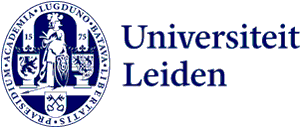
It is not easy to simplify your research
Defending your PhD research in front of nearly 300 elementary school students: that was the challenge faced by PhD candidates Jo-Anne Verschoor and Marinka de Willigen during the VUURVLIEGEN competition organised by the Centrum JongerenCommunicatie Chemie (C3). After an exciting competition, the children ultimately decided which scientist presented best.
For Marinka, participating in the competition was a step outside her comfort zone: ‘One of the goals I set for myself this year was to improve my presentation skills. Speaking to such a large group of children was a great opportunity, especially because kids are always such an enthusiastic audience.’
Jo-Anne had experience presenting to students before, but never to such young children. ‘When I saw the call for participants in the IBL newsletter, I signed up immediately. When I was their age these kinds of events unfortunately didn’t exist. It was a miracle if we ever had a biology lesson. So I thought: I need to contribute! If I can get just one or two kids excited about science, that would be amazing.’
A hydrogen engine or plastic-eating bacteria in simple terms
During the preparation, the PhD candidates received support from C3. There was an online kick-off meeting and a practice session where they received tips and tricks. Jo-Anne: ‘The rest was up to us.’ Translating scientific terms into understandable language was quite a task. Marinka talked about her research on a catalyst that can remove carbon monoxide from hydrogen for use in hydrogen cars. Verschoor works on bacteria that can break down plastic.
Marinka: ‘I asked my supervisor Irene Groot, who occasionally teaches elementary school students, for help. And I practised a lot in front of different people, asking them to pretend they were twelve years old. I explained difficult concepts or left them out. I focused much more on the goal of my research, rather than what I do in detail.’ Jo-Anne had help from a handy connection: ‘Both of my sisters studied pedagogy,’ she says, laughing. ‘So I could check with them to see if my story was understandable.’

Marinka’s hydrogen engine was a more abstract topic than Verschoor’s bacteria. ‘I tried to solve that by showing lots of pictures, like a photo of my setup. I didn’t go into detail, but they found the setup very interesting.’
Try explaining that…
The children had all sorts of questions afterwards. ‘We got the most random questions,’ says Marinka. ‘For example: “What’s your salary?” or “How much does that gold plate you use cost?” But also thoughtful questions like: “Why do you use hydrogen, what’s special about it?” or “Can you use hydrogen in aeroplanes?”’
‘We got the most random questions, such as: “What is your salary?” Or “How much does such a gold plate cost?”.’
Jo-Anne: ‘Children often think very differently from us. My story was about a new way of recycling: with plastic-eating bacteria. Then I got the question: “But why don’t we just wash those bottles?” An excellent question, of course. Try explaining that. And you have to do it quickly because there wasn’t much time.’
Tips from Jo-Anne and Marinka:
- Focus on why something is important: what is the goal of your research? Why do you do what you do?
- Pay attention to your language: terms you use daily might be completely unknown to others.
- An explanation doesn’t always have to be 100% accurate, as long as the main idea or big picture comes across.
- Practice and ask for feedback from people unfamiliar with the subject: do they understand the terms you use? Do they grasp the main point of your story?
- Make it visual: use lots of images, like photos of your setup or a video of what you see through the microscope.

‘300 children are really a lot of children’
Did the scientists learn anything themselves? Jo-Anne laughs: ‘I learned that 300 children are really a lot of children. You have to stay focused, they quickly start shouting over you. On the one hand, you shouldn’t let that distract you, but you also have to pay attention to whether they’re asking something important that you actually want to explain.’ Marinka: ‘It was also quite warm in the room. The concentration span was short.’
Jo-Anne: ‘You have to play into that well. If you make it too simple, you lose them. But if it’s too complicated, they tune out too. It’s a very fine line that determines whether the message gets across or not.’
Marinka: ‘I wanted to talk about my electron microscope. It’s such a big part of my research, that I couldn’t leave it out. But to explain everything exactly, that you have to “tunnel electrons between the tip and the sample”, that goes way too far. So I said it’s a microscope that lets you zoom in to the smallest particle: an atom. That’s not 100% accurate, but they understand roughly what you’re doing.’

A diverse view of science
Unfortunately, Jo-Anne and Marinka didn’t win; that honour went to Lieke Ceton, who talked about choosing the right therapy for cancer patients. Marinka: ‘There was a nice variety of topics, with researchers from LUMC to Naturalis.’ Jo-Anne: ‘The number of men and women was also well balanced. We gave the children a diverse view of science. And I think they enjoyed it too.’
Further reading
Read the press release (in Dutch) on the website of the Centrum JongerenCommunicatie Chemie.
